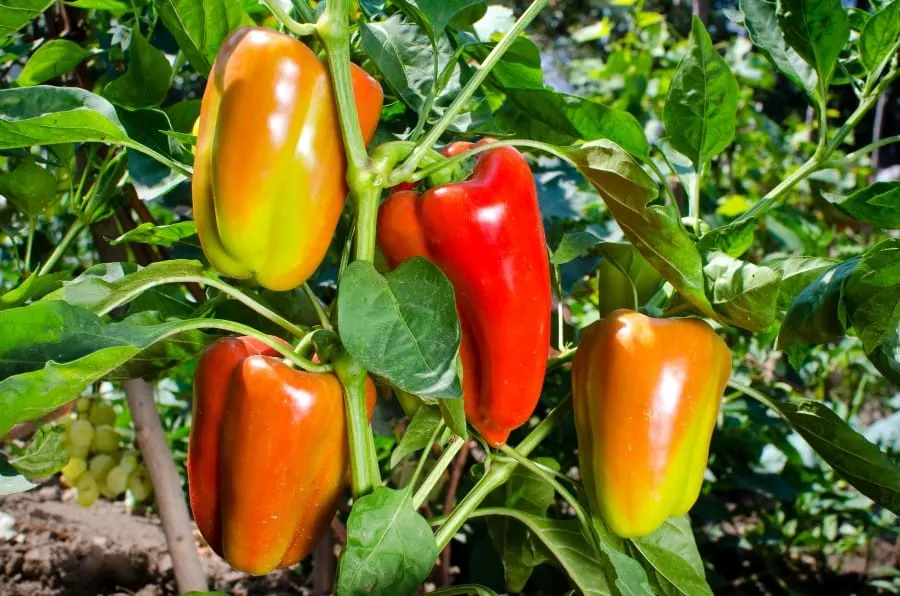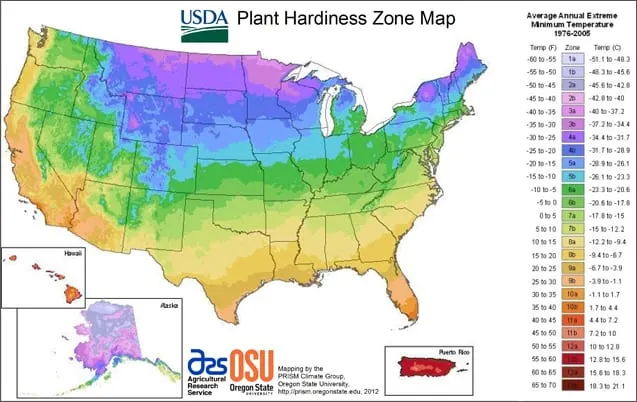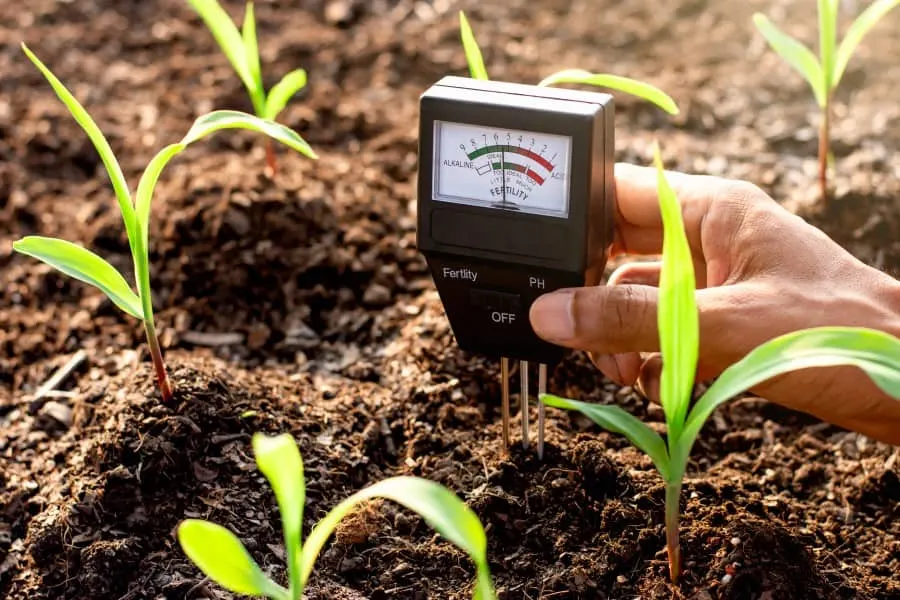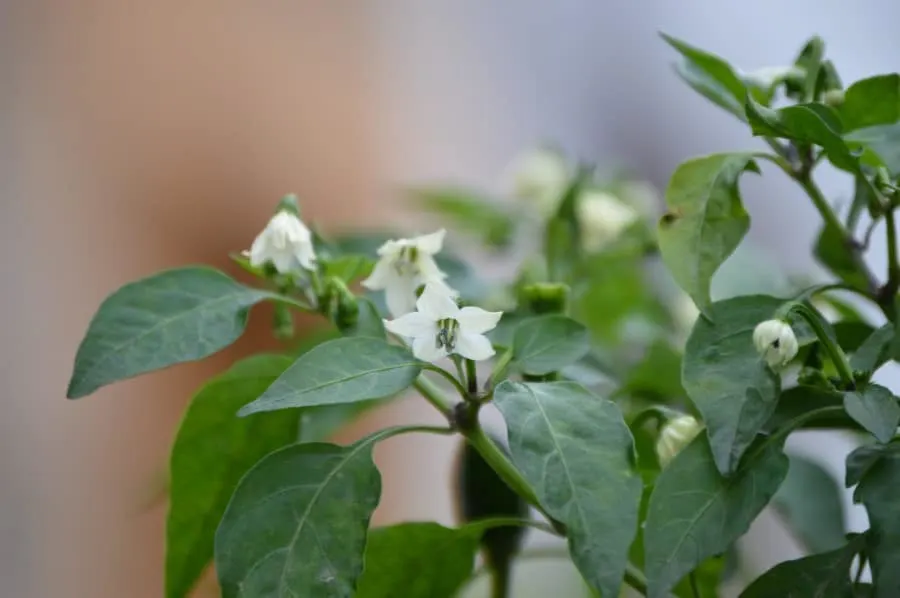There are few things more frustrating than not seeing your plants thrive and not knowing why. Especially when it’s a pepper plant and no pepper pods are developing! Why is that and how do you fix it?
Your pepper plant not producing peppers could be due to issues with the plant’s temperature, insufficient soil nutrient levels, incorrect fertilizer use, or inadequate amounts of sunlight. These can be remedied with heating pads, proper fertilization, and grow lights.
It can be frustrating and disheartening to read a list of potential growing issues with your plant but not know how to identify them or treat them. But do not fret, we are here to take you through pepper-specific problems, how to identify them, and what steps you should take to fix them.

1. The Temperature is Too Hot or Cold for Your Pepper Plant
Every plant has a specific range of temperatures that it thrives in. Not every plant will grow perfectly in all environments. Imagine attempting to grow a chili pepper plant in the arctic: the plant will likely fail to grow, let alone, produce pepper pods.
Pepper plants require temperatures between 70 to 85 degrees Fahrenheit (21 to 29 degrees Celsius) during the day and 60 to 70 degrees Fahrenheit (15 to 21 degrees Celsius) overnight for optimal growth. The climate that your plant thrives in can also be measured in hardiness zones. Pepper plants prefer USDA zones 9b-11b.

Ways to Identify if Your Pepper Plants are Too Cold or Too Hot
Temperatures that are too cold can hinder the plant’s growth and temperatures too high can cause flowers to drop. No flowers mean the pepper plant cannot be pollinated which means that it cannot produce peppers.
Signs that your pepper plant is too cold include:
- The pepper plant has stopped growing
- No pepper pods are developing
Signs that your pepper plant is too warm include:
- The pepper plant’s blossom-end of the fruit has black spots and mold
- Leaves turn yellow to brown or have black spots
How to Fix Your Pepper Plant Temperature Issues
While you cannot change the climate you live in, you can change where you keep your pepper plant.
The easiest way to control the temperature of your pepper plan is to grow them indoors. When inside, if you have difficulty providing enough warmth for your peppers, you can purchase a heating mat like the VIVOSUN Heat Mat and Digital Thermostat Combo to keep your plant at the perfect temperature.
Other common ways to regulate pepper plant temperatures include:
- Regular watering
- Shade cloth
- Adding mulch to the soil
2. Your Pepper Plant is not Receiving Enough Nutrients from the Soil

Pepper plants require nutrient rich soil to thrive. It takes a lot of energy to grow a plant and produce fruit, so giving your plant nutrient-rich soil is key to successfully reaching the harvest stage.
How to Identify Nutrient-Deficient Soil
A key indicator that your soil lacks essential nutrients is that your pepper plant has lush green foliage but isn’t producing fruit. You can use a soil tester like the VegTrug Bluetooth 4-in-1 Soil Tester to find out exactly which nutrients your soil is deficient in.
Unlike some other testing kits, the VegTrug model gives you a guide to different plants’ ideal nutrient levels. This ensures your pepper plant is getting exactly what it needs.
How to Fix Nutrient-Deficient Soil
| Nutrient Deficiency | Solution |
| Nitrogen | Sprinkle rinsed coffee grounds onto the soil |
| Phosphorous | Add bone meal or used fish tank freshwater to the soil |
| Potassium | Burying a banana peel in the soil |
| Calcium | Add crushed eggshells to the soil |
| Magnesium | Sprinkle Epsom salts onto the soil |
3. You Are Using Fertilizer Incorrectly
Adding fertilizer to plants can be a deceptively easy task, but one that if done incorrectly can actually cause more harm than good.
We’ll teach you how to watch out for the warning signs of incorrect fertilizer use and how to fix them to ensure your plants are getting the best care possible.
How to Identify Fertilizer Issues in Pepper Plants
Since fertilizers add vital nutrients to your plant’s soil, an under-fertilized plant’s indicators will be the same as that of a nutrient-starved plant. Typically, this means your plant has lush green foliage but little to no fruit production.
Over-fertilization can result in a condition known as fertilizer burn. The salts in fertilizer pull the water out of plants, causing them to lose their moisture. Fertilizer burn can be identified by burnt or scorched-looking leaves on your plant. The leaves usually appear yellow or brown and withered.
How to Fix Fertilizer Issues
Just like with magnesium deficiency, Epsom salts can help cure over-fertilization in your pepper plant. Simply dissolve one teaspoon of the salts into four cups (one liter) of water and spray the plant with this solution.
Another way to treat fertilizer burn is by removing the affected soil and flushing it with large amounts of water. Be sure that the water does not run off, though, as the over-fertilization can also negatively affect other nearby plants.
To properly care for your plant, it’s important to know that different phases of your pepper plant’s growth will require different fertilizers. During the fruit-bearing phase of your plant’s life, it will need less nitrogen but more phosphate and potassium than in its early rooting phases.
Fertilizer grades are measured by their quantities of each of these elements. The amount of each nutrient appears in an x-x-x sequence. The first number stands for nitrogen, the middle is phosphate, and the last digit represents potassium.
A great option for the blooming phase of your pepper plant’s life is Neptune’s Harvest FS136 2-3-1 Fertilizer as it contains relatively low levels of nitrogen but sufficient phosphate and potassium levels to help your plant thrive. For best results, use this fertilizer weekly.
If you want to learn more about using fertilizer on pepper plants I’ve linked to a comprehensive post I wrote on the subject.
4. There Are Problems with Your Pepper Plant’s Pollination
I know what you’re thinking: isn’t pollination a job for the bees? Well, yes. However, populations of pollinators have been rapidly declining, so you’re unfortunately less likely to get a visit from one of these flying creatures these days.
How to Identify Pollination Problems
There are many potential signs that your plant may be struggling with pollination-related issues. Some of them include:
- Your pepper plant has plenty of green foliage, but minimal fruit
- The fruit is growing, but it is small and lacks seeds
- Peppers are deformed
- The pepper plant has flowers but is not producing pepper pods
How to Fix Pollination Problems
Increasing pollination of your pepper plants is amazingly simple. All you need to do is gently tap on your plant to encourage the spreading of pollen. You can even transfer the pollen manually with a brush or cotton swab from one flower to another. This method is called hand pollination. You can check out this post for more information on how to hand pollinate your pepper plants.
5. Your Plant Is Getting the Wrong Amount of Sunlight
Both a lack of sunlight or an excessive amount can cause trouble for your peppers. While you can’t change how much sunlight you get, there are some ways to help your plant get the right amount of light it needs.
How to Identify Incorrect Amounts of Sunlight
A sign that your peppers have been getting too much sun is that there are lightly colored spots on the fruit that are both soft and dry. Also, keep an eye out for dropping leaves as this is also a sign of excess sun.
Peppers love full sun, so the more common sunlight issue is that they do not get enough. If your plant appears stunted, this could be the issue.
How to Ensure Your Pepper Plant Receives the Proper Amounts of Sunlight
You can remedy the problem of excess amount of sunlight by covering your plant with a Wineman Shade Cloth or creating a canopy of sorts by strategically shaping any above-hanging plants.
If your plant needs a bit more light, move them to an area that receives direct sunlight if possible. If you can’t get full sun outdoors, opt for a grow light like the Phlizon 600W LE DPlant Grow Light. This model is completely adjustable to provide your peppers with the ideal lighting in every stage of their growth! To learn more about grow lights I’ve added a link to my post on the subject.
6. Your Pepper Plant Is Not Producing Flowers

There is no way for your plant to produce fruit if it does not produce flowers first.
How to Identify a Lack of Flowers
It’s quite easy to tell if a lack of flowering is the issue with your plant – there simply won’t be any blooms! Sometimes, your peppers might produce flowers when the plant is still immature but cease when the plant is older.
How to Fix a Lack of Flowers in Your Pepper Plant
If your peppers bloom before the plant is mature, pick off the flowers immediately. If not, this can stunt the growth of the plant.
Incorrect temperature can also be responsible for the lack of flowers. This can be remedied by following the guidelines on how to fix temperature issues.
Closing Thoughts
There are many possible reasons why your pepper plant is not producing peppers. These factors include:
- Your pepper plant is too hot or too cold
- There is a lack of nutrients in your soil
- You are using fertilizer incorrectly
- There is an issue with pollination
- Your plant is getting too little or too much sun
- Your plant is not producing flowers
Luckily, all these issues can be solved with the help of heating pads, shade cloths, proper fertilizers, and grow lights, among others.
Here are Some of my Favorite Gardening Products and Tools
Thank you for reading this article. I hope you found it helpful for growing some new plants in your home or garden. Here are some products I like that I hope you’ll also find helpful. These are affiliate links, and I am compensated for referring traffic. But in all honesty, these are the exact product that I use or recommend to everyone.
Soil: For high-quality soil, I really like Fox Farm Ocean Forest. I do all my growing in containers and this soil has worked great for me. I like how they use nutrient-rich contents like earthworm castings, bat guano, and composted crab and fish.
Fertilizer: Currently I am using a seaweed-based organic fertilizer call Neptunes Harvest. This is a great milder fertilizer option if you want to use something organic. If you want a more powerful fertilizer, I recommend Fox Farm Liquid Nutrient Trio, lots of people have had great growing success with this product.
Pruning Shears: Pruning shears are one of the most useful gardening tools to have because it’s important to prune your plants to keep them healthy. The pruning shears I recommend are the Gonicc 8’’ pruning shears. I like them because they are built sturdy and work both on bigger and smaller plants, so you don’t need to have multiple pruning shears.
spicytrio.com is a participant in the Amazon Services LLC Associates Program, an affiliate advertising program designed to provide a means for sites to earn advertising fees by advertising and linking to Amazon.com. spicytrio.com also participates in affiliate programs with other sites. spicytrio.com is compensated for referring traffic and business to these companies.
